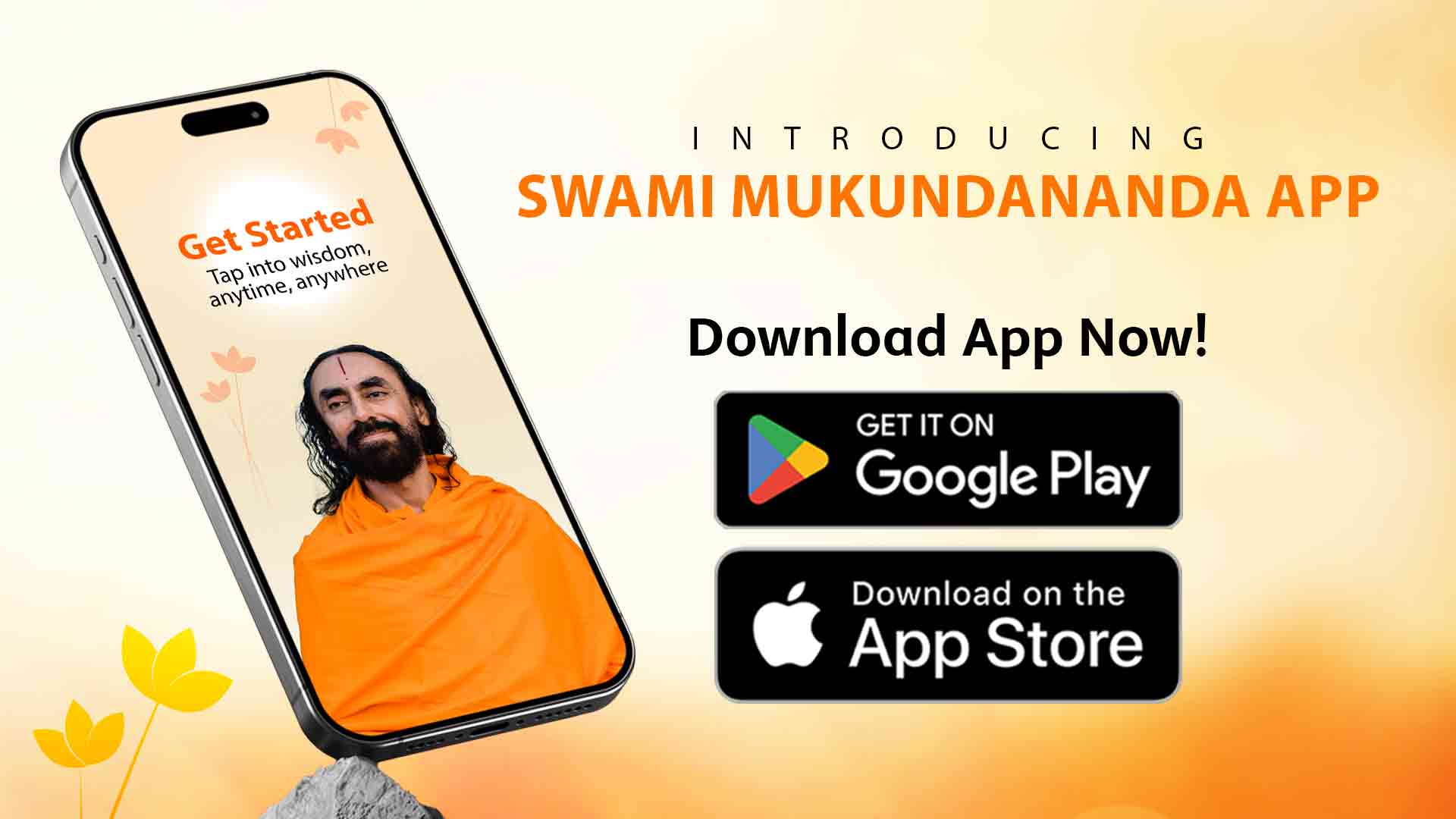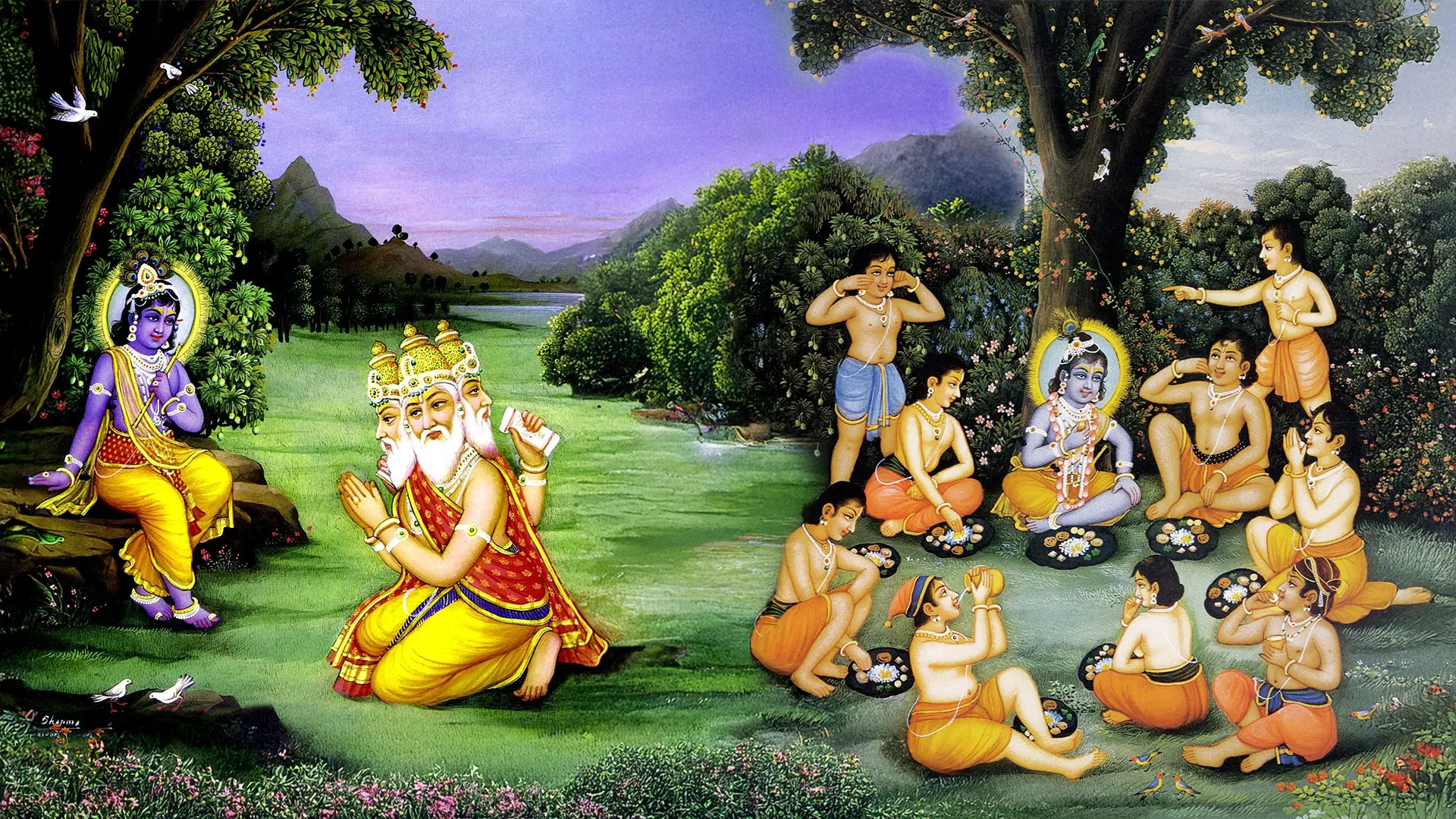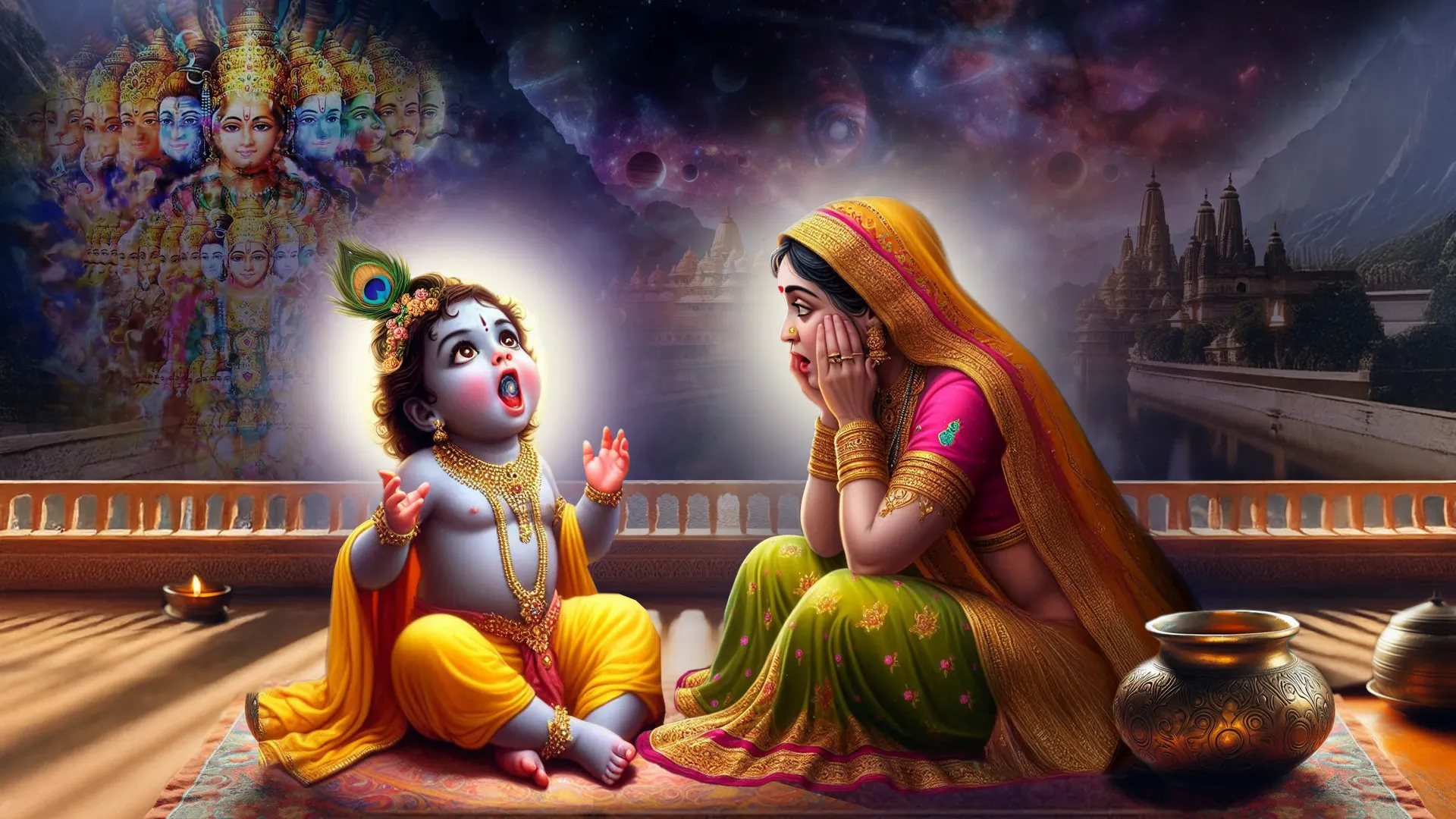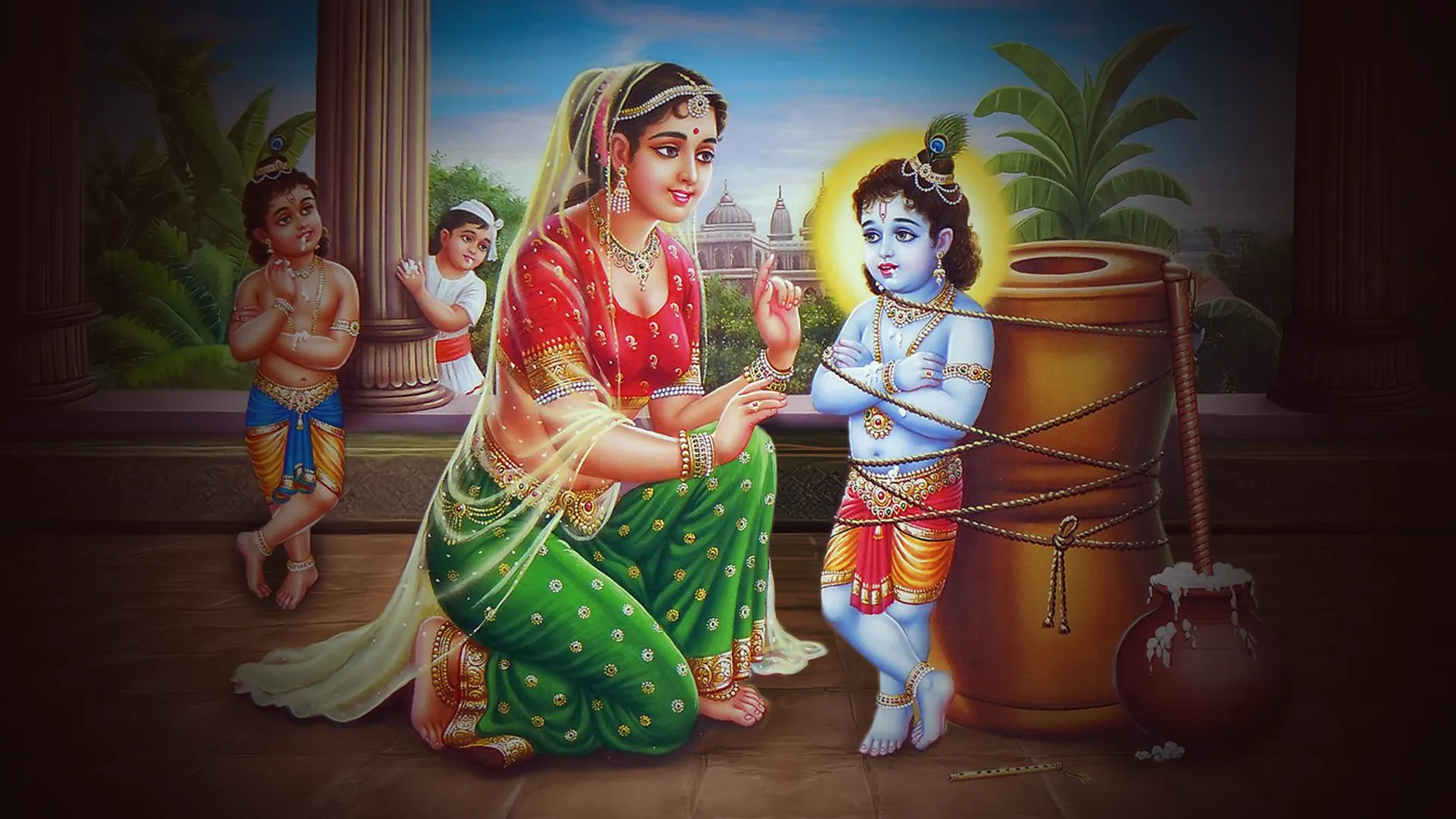On the auspicious 8th day of Navaratri, devotees pay their reverence to Mahagauri (Mahāgaurī/महागौरी), the supreme goddess whose name embodies her essence. The word "Maha" (Mahā/महा) denotes supreme, while "Gauri" (gaurī/गौरी) signifies her fair complexion. Often depicted with a white bull as her mount, Mahagauri is adorned with four hands. In two of them, she gracefully holds a trishul (trident) and a damaru (drum) while the other two are poised in a fear-dispelling and blessing gesture. Draped in a white saree, she represents one of the peaceful forms of the goddesses. Her devotees seek her blessings to attain unwavering loyalty in relationships and forge lasting bonds. It is believed that through devotion to Mahagauri, one can dispel confusion, sorrow, suffering, and poverty from their lives, basking in the radiant light of her grace.
Rituals and Worship of Maa Mahagauri, Maha Ashtami, and Kanya Puja
The ritual of worshipping Mahagauri starts with bathing the idol with Ganga or pure water, symbolising the sanctity of the ritual. Devotees offer white-coloured clothes to the goddess, as white is believed to be beloved by her. Afterwards, they adorn her with white flowers and apply Roli Kumkum as a mark of devotion. The offering is completed by presenting sweets, dry fruits, and fruits as a symbol of gratitude. Black gram, a special offering for Mother Mahagauri, should not be forgotten either. Devotees spend their time in meditation, immersing themselves in her divine presence. They can also perform her Aarti, a heartfelt expression of their devotion.
Maha Ashtami carries a special significance as it is the day when Kanya Puja, a beautiful ritual, is observed. This ritual exemplifies a core aspect of Sanatan Dharma, where the feminine power is worshipped and deeply revered as the goddess herself. Young girls are seen as embodiments of divine energy, and their worship symbolizes the purity and grace of the feminine aspect of the divine. It's a celebration of the feminine's strength, beauty, and sacredness in all its forms, making the 8th day of Navaratri a truly special and spiritually enriching occasion.
The Transformation of Goddess Parvati: The Tale of Mahagauri
The tale of Mahagauri is the symbolic transformation of Goddess Parvati. Parvati's complexion remained dark after defeating the asuras in the form of Kaalratri. Her husband, Lord Shiva, playfully referred to her as 'Kaali,' but this nickname only added to her distress. So, she embarked on a deep and penitent meditation before Lord Brahma for many days to regain her fair skin.
Brahma, the creator, advised her to bathe in the holy waters of the Mansarovar River in the Himalayas, and some versions also mention the river Ganga. Maa Parvati immersed herself in these sacred waters with faith and devotion and experienced a miraculous transformation. Her dark skin separated from her, and a radiant and fair form of Maa Parvati emerged. This form of Maa Parvati is known as Kaushiki in some Puranas, and she is credited with slaying the formidable asuras Shumbha and Nishumbha, who had received a boon rendering them invulnerable to harm from man, gods, and deities. However, it was the Supreme Goddess who ultimately defeated them.
With her restored fair complexion and beauty, Maa Parvati became known as Mahagauri, which signifies her extreme fairness. This story is a powerful metaphor for devotion and penance's transformative and purifying nature, emphasising the goddess's unwavering grace and strength. It's a tale that inspires us to have faith and trust in the divine powers and to never give up hope, even in the most challenging times.








